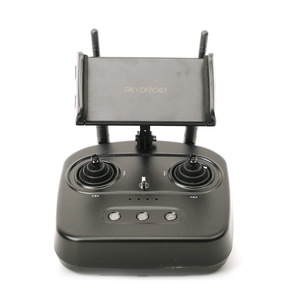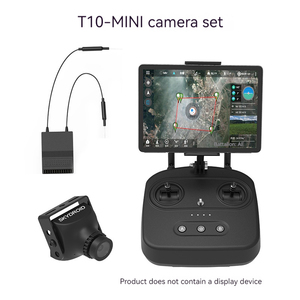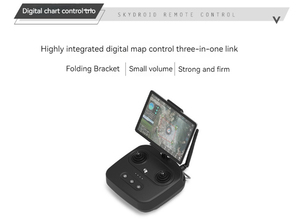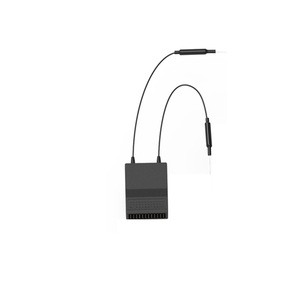
All categories
Featured selections
Trade Assurance
Buyer Central
Help Center
Get the app
Become a supplier

(56000 products available)


















































Bluetooth-controlled drones are unmanned aerial vehicles that are operated via Bluetooth technology instead of Wi-Fi or radio transmitters. They are also known as Bluetooth drones. They are encrypted, low-power wireless communications that link to a smartphone or tablet from which the drone can be controlled via an app. The range of these drones is within the range of normal Bluetooth technology, which is approximately 10-30 meters maximum. There are several types of Bluetooth-controlled drones depending on various features of the drone;
Camera drones:
These are drones that are equipped with cameras on board that can be controlled via Bluetooth from a smart device. The pictures and video footage taken can be stored in an SD card or on the device remotely. Drones with Bluetooth cameras can take aerial photography completely hands-free without a photographer, and they can also capture panoramic views or photojournalism videos. The cameras on the drones can be high-definition (HD) 1080p or even 4K. Some models allow the recording of videos as long as 30 minutes. Drone camera models can vary from 1 megapixel (MP) to up to 12 MP. Alternative storage options for pictures and video footage include USB keys or cloud-based storage options. Drone apps can also be used to edit the media directly on the smart device. Examples of Bluetooth camera drones include the Holy Stone HS510 GPS Drone and the Potensic D88.
Long range drones:
These are the types of drones that can fly farther than the average Bluetooth range. These long-range drones circumvent the limitation of the normal Bluetooth range with technological innovation in design. They vent most of the drone's payload, which consists of the transmitter antenna, into the air, and they also integrate stronger antennas. Their design allows for a clear line of sight that helps expand communication ranges. These long-range drones are ideal for mapping and surveying activities. For these purposes, LIDAR can also be used for mapping, and photogrammetry can be utilized for precise Digital Elevation Models (DEMs) for agricultural use near the planting area. This can be done at a quicker pace, thus saving time and enhancing productivity.
Foldable drones:
Bluetooth-controlled foldable drones are compact in nature and can be folded. When the drone is folded, it becomes smaller, thus making it portable and convenient to carry anywhere. These drones usually have a camera and can be non-foldable or foldable based on their design. When buying a drone, if portability is a major deciding factor, then a foldable drone would be the right choice.
Beginner-friendly drones:
Bluetooth-controlled drones that have easy controls and settings are ideal for beginners. They can learn how to fly with these simple drones and then advance to flying more complicated drones once they have attained proficiency in handling drones. Beginner-friendly drones usually come with added protective features. These features allow the drone to be protected from the inevitable crashes and bumps that may occur while the flight operator is still learning how to control it. These beginner-friendly drones cost less and are more economical for beginners.
Outdoor drones:
Drones that are controlled via Bluetooth and are intended for outdoor use are designed to withstand wind and moisture. This weatherproof drone can fly in light rain and stable under light winds. Since these drones are designed for outdoor use, they usually come with cameras and longer flight times. The longer flight times allow for the covering of more distances. The high-quality build will also enable the drone to be used for a longer term. These drones can be used for mapping, surveying, and monitoring tasks over larger areas.
When comparing Bluetooth-controlled drones to traditional RF-controlled drones, the former offers many benefits.
Generally, drone-controlled Bluetooth models offer a better user experience. Below are more features of Bluetooth-controlled drones:
Recreational Flying and Drone Racing :
Bluetooth-controlled drones can provide a thrilling flying experience. One can use it to race against friends or just to show off piloting skills in a competitive setting. With drones becoming increasingly popular, there are now professional racing leagues where pilots compete for cash prizes. These events are usually held in large stadiums and are televised worldwide.
Aerial Photography and Videography:
Some drone enthusiasts take their drones out to scenic locations and attach cameras to them in order to capture stunning aerial footage. This has created a new genre of filmmaking known as drone cinematography. In recent years, cinematographers have started using drones to shoot commercials, music videos, and even feature films. As a result, the demand for good-quality cameras on drones has increased tremendously.
SURVEILLANCE AND MONITORING:
Operators can control drones with Bluetooth technology to keep an eye out for suspicious activity. This can be done by setting up a perimeter and then flying the drone around it to scan the area. Some law enforcement agencies already use drones for this purpose as they provide a bird's eye view of a given location.
Mapping & Inspections :
Bluetooth-controlled drones are also used for mapping and inspection tasks. They come with GPS systems that allow precise positioning and waypoint navigation. These drones can create detailed maps or perform inspections of hard-to-reach areas, such as roofs, power lines, and pipelines. Several industries, including construction, agriculture, and energy, use them to increase efficiency and reduce costs.
When choosing a Bluetooth drone, several factors should be considered to ensure it meets specific requirements and provides optimal performance. Here are some key points to remember when selecting a Bluetooth-controlled drone;
Q: What is the benefit of a Bluetooth-controlled drone over a WiFi-controlled one?
A: Contraryarily to a Bluetooth drone, a WiFi drone operates through a WiFi connection where an adequate signal and coverage are necessary. While WiFi drones can connect to a more extensive network that allows more extended operations, they are more susceptible to losing signal in remote areas, far away from the home point, or in areas with no WiFi connection. On the other hand, one significant advantage of Bluetooth-controlled drones is that they can be operated in areas without a WiFi signal or in the countryside.
Q: How far can a Bluetooth drone be controlled?
A: Generally, the range for a Bluetooth-controlled drone depends on the type of Bluetooth technology used. Regular Bluetooth typically has a range of up to 100 meters (328 feet), while Long Range Bluetooth can operate about 2 kilometers (1.24 miles) in ideal conditions. However, terrain obstacles can decrease the range considerably. It is essential to know that other factors can impact the drone's controllability, such as the model, environmental conditions, and Bluetooth version.
Q: Can a Bluetooth drone be hacked?
A: Drones that use Bluetooth technology might be at risk of being hacked. While the risk is not high, it is critical to ensure the drone has secured Bluetooth with minimal risk of being hacked. Drones are primarily targeted for hacking to gain unauthorized control over them and to interfere with their operation. If the hacker has access to the drone, he might use it for malicious purposes, breach privacy or steal sensitive data if it is equipped with a camera.
Q: Are there any legal considerations for selling Bluetooth-controlled drones?
A: Yes, there are legal considerations when selling Bluetooth-controlled drones, which may vary depending on the country or region where one is selling. It is essential to be aware of and comply with regulations regarding drone certification, safety standards, and electromagnetic compatibility. One should also know regulations regarding drone operation, such as restrictions on flying in certain areas or altitude limits, and ensure that the drones being sold comply with these regulations.